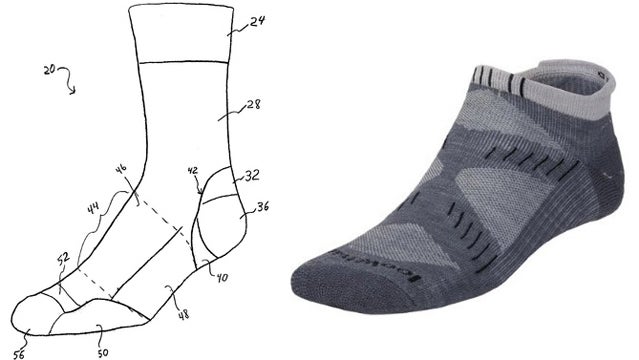One of our favorite running socks is the . Who would have pegged wool as a performance running material? It turns out wool breathes, keeping your feet cool, and resists odor, keeping you stink-free among your buddies while riding back from the race.
This spring, the company released its thinnest version yet, embedded with technologies that make the socks fit better and last longer in the toe and heel. Our first impression when we tried them was that they were comfortable and mostly disappeared during a five-mile trail run.
By now, you’re probably wondering: What’s so technical about wool socks? Don’t you just shear some New Zealand sheep and knit it into a vaguely hockey-stick-like shape? In reality, this prosaic running accessory has a lot of tech embedded inside. Smartwool’s efforts reminded us of another company that bases its product on a natural material—Patagonia and its new Encapsil goose down, which is treated with silicon to make the down more water resistant and improve its insulation value. Both Smartwool and Patagonia claim their altered natural fibers are more environmentally sustainable than competitors’ fabrics.
We were curious about the science of socks, so we called Sue Jesch, design director for Smartwool. She pointed out that one of the challenges for the company is that wool carries both a benefit and a drawback. “We’re not a synthetic company,” she said, “Synthetic fibers stick around in landfills forever. Our product eventually degrades away, thank goodness, but we want to create the most durable product possible.”
In order to make the socks more durable, Smartwool researchers spent the past five years to use the wool itself to generate a “felting” action. Felting happens when you shrink wool: The fibers bond together to form a dense, durable cloth. Most Smartwool products have gone through a specialized process called superwashing to prevent felting (that’s why the stuff typically doesn’t shrink). But the researchers found that by combining superwashed wool and untreated wool, they could make the sock selectively felt, and therefore strengthen, in high-wear areas like the heel and toe.
Jesch says that Smartwool, along with researchers at the University of Otago in New Zealand and a private U.K. research company, studies athletes in motion, looking for ways to design around the body’s friction zones. Because the Merino fibers are typically harvested closest to the sheep’s body, they have natural temperature-regulating ability. On a microscopic level, the highly porous fibers absorb water in its vapor state, managing sweat more efficiently than other materials. And the porous structure makes it less likely to harbor the bacteria that create odor. “Merino’s the best solution next to skin in your boot or your running shoe,” says Jesch, pointing out that Smartwool takes a hybrid approach with materials. “We’re going to use Merino where it makes sense,” she says.


